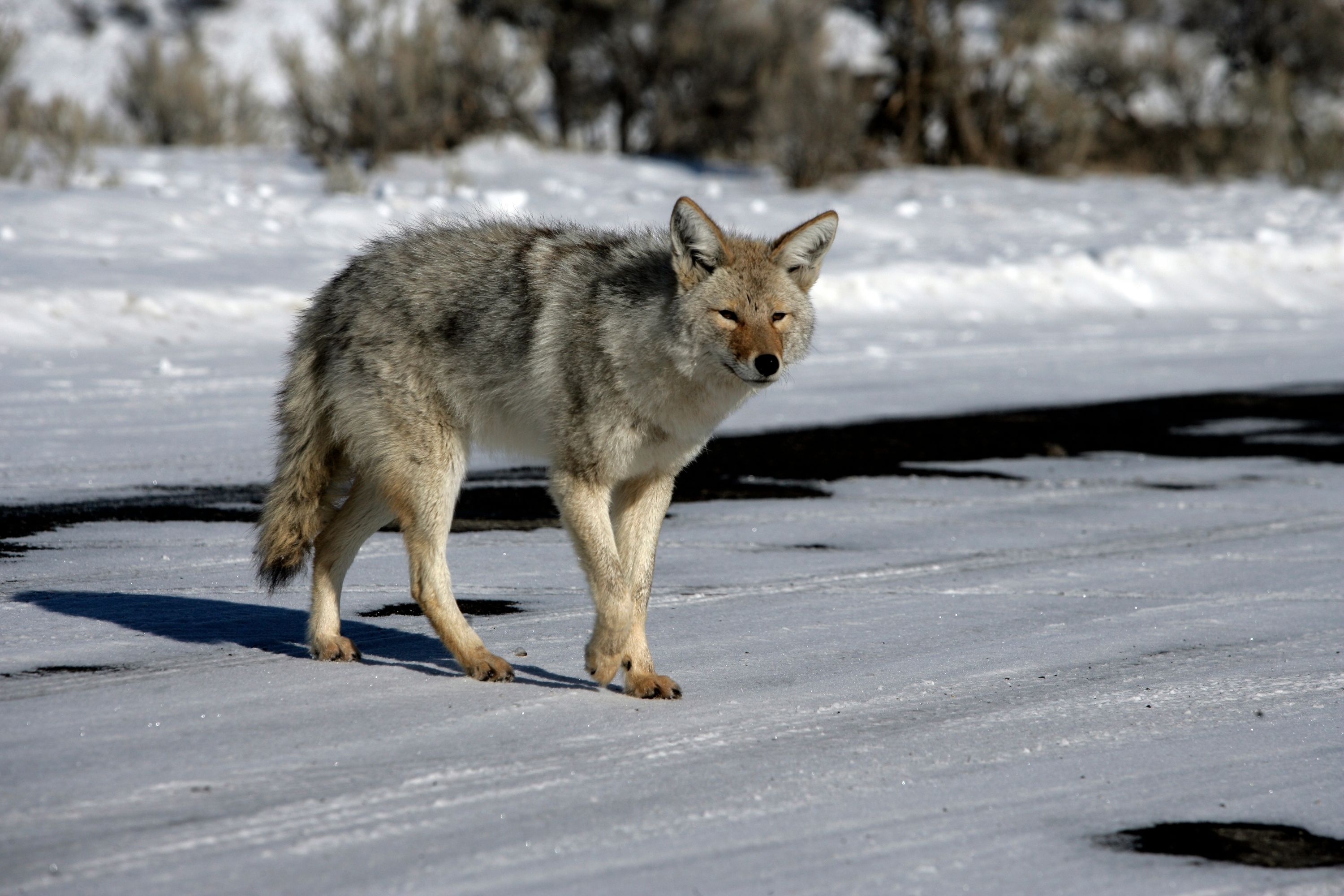Coyote
(Canis latrans)

Description
The coyote (Canis latrans) is a species of canine native to North America. It is smaller than its close relative, the wolf, and slightly smaller than the closely related eastern wolf and red wolf. It fills much of the same ecological niche as the golden jackal does in Eurasia. The coyote is larger and more predatory and was once referred to as the American jackal by a behavioral ecologist. Other historical names for the species include the prairie wolf and the brush wolf. Coyote males average 8 to 20 kg in weight, while females average 7 to 18 kg (15 to 40 lb), though size varies geographically. Northern subspecies, which average 18 kg (40 lb), tend to grow larger than the southern subspecies of Mexico, which average 11.5 kg (25 lb). Body length ranges on average from 1.0 to 1.35 m (3 ft 3 in to 4 ft 5 in), and tail length 40 cm (16 in), with females being shorter in both body length and height. The largest coyote on record was a male killed near Afton, Wyoming, on November 19, 1937, which measured 1.5 m (4 ft 11 in) from nose to tail, and weighed 34 kg (75 lb). Scent glands are located at the upper side of the base of the tail and are a bluish-black color. The color and texture of the coyote's fur vary somewhat geographically. The hair's predominant color is light gray and red or fulvous, interspersed around the body with black and white. Coyotes living at high elevations tend to have more black and gray shades than their desert-dwelling counterparts, which are more fulvous or whitish-gray. The coyote's fur consists of short, soft underfur and long, coarse guard hairs. The fur of northern subspecies is longer and denser than in southern forms, with the fur of some Mexican and Central American forms being almost hispid (bristly). Generally, adult coyotes have a sable coat color, dark neonatal coat color, bushy tail with an active supracaudal gland, and a white facial mask. Albinism is extremely rare in coyotes; out of a total of 750,000 coyotes killed by federal and cooperative hunters between March 22, 1938, and June 30, 1945, only two were albinos. The coyote is typically smaller than the gray wolf, but has longer ears and a relatively larger braincase, as well as a thinner frame, face, and muzzle. The scent glands are smaller than the gray wolf's, but are the same color. Its fur color variation is much less varied than that of a wolf. The coyote also carries its tail downwards when running or walking, rather than horizontally as the wolf does.
Taxonomic tree:







